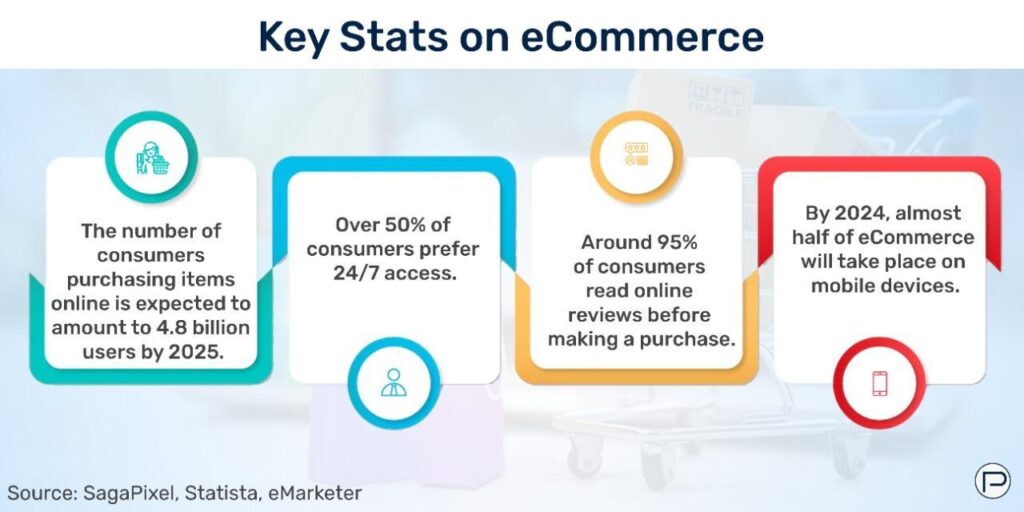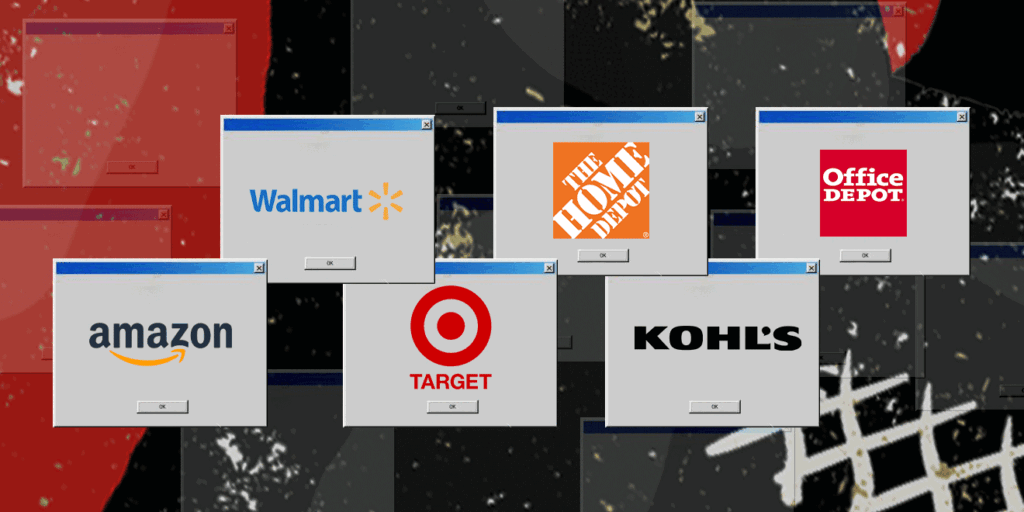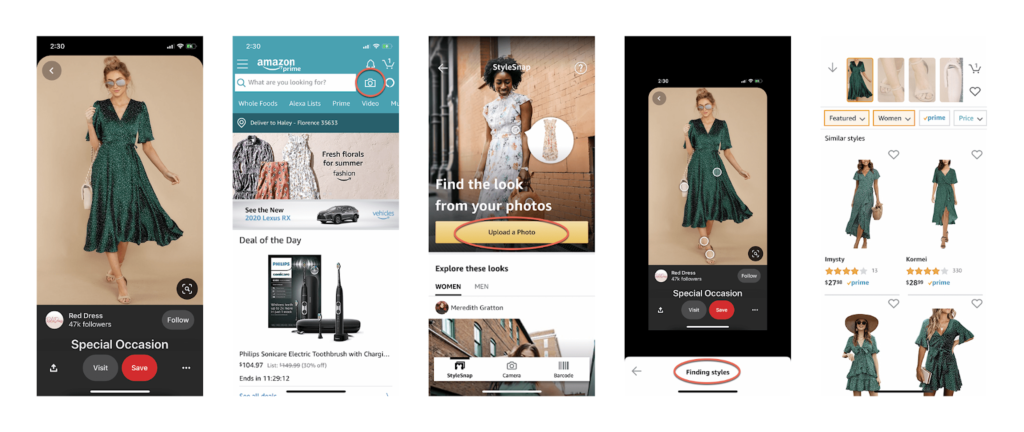The return of eCommerce to near normal, coupled with economic concerns, has led to a consumer reluctance to spend money. And in a more competitive global marketplace than ever, e-commerce brands and sellers are now challenged to retain consumers (and spend) while responding to shifting trends in 2023.
In 2022, eCommerce and omnichannel were viewed as the future, and in 2023, retailers would have to be flexible and consumer-centric and enhance their retail-tech capabilities to thrive. In fact, eCommerce spending is expected to reach $36 billion in 2023 – a 20% projected to increase from 2022, as per Insider Intelligence. With the advent of technology, modern shoppers have developed a new set of expectations – and retailers need to think through every move they make carefully. This blog post examines the top eCommerce marketing strategies for 2023 to ensure success.
Table of Contents
Some Key Stats To Help Devise An ecommerce Marketing Strategy Further

Top E-commerce Marketing Strategies For 2023
1. Think Mobile-First
Statistics from Statista indicate that 61% of online orders were placed on a mobile device. Therefore, optimizing your customer experience for mobile is essential if you want to remain competitive in eCommerce.
Mobile-friendly eCommerce sites will:
- Adapt to screen size and orientation
- Large fonts and buttons
- Don’t take too long to load
- Make product pages simpler and easy to read
2. It’s All About Video
When your customers can’t fully understand what they are buying, how can they trust you with their money? The more details you provide about your product or service, the more likely your audience is to click “buy.” According to Channable, 81% of marketers report that video increased sales directly.
A product can be better displayed with context-sensitive video than static images or text. Many marketplaces now offer auto-play short-form videos, including Amazon, Walmart, and many more.
3. Retail Media Explosion
Retail media has thrived in recent years within e-commerce, enabling retailers and brands to reach consumers near the end of the online journey: the point of purchase.
It is estimated that retail media advertising will grow 31.4% to $41.37 billion in 2022, according to eMarketer. For growing brands, digital retail media offers a number of potential benefits. With targeted placements, brands can gain new visibility and connect with highly relevant consumers who are actively searching for products to purchase. Through retail media, brands are able to:
- Reach customers who are ready to buy
- Easy access to track the sales data
- More visibility and discoverability

Source: Adweek
4. Social Selling
As a result of its convenience and non-intrusive advertising, social commerce is already on the rise. By 2023, it is expected to generate $30.73 billion in sales, representing 20% of global retail eCommerce revenue. 75% of retailers already sell on social media, with social storefronts and shoppable posts. (Source- Statista)
The rapid return on investment, strategic targeting of the right online audiences, and positive advertising are also driving eCommerce brands and retailers to consider influencer marketing as a marketing channel. Influencer marketing is often perceived by customers as more trustworthy than brand messaging, so they are influenced to try out brands endorsed by influencers they follow: UGC videos are 22% more effective than brand videos.
On social media platforms, you can offer exclusive deals, create live-stream shopping experiences, and even work with influencers. Social commerce isn’t just about selling products online. You need to develop a full-funnel strategy for social media that reaches, engages, and converts shoppers. On social media platforms, you can offer exclusive deals, create live-stream shopping experiences, and even work with influencers.
Example of Walmart moving into live-stream shopping

Amazon’s live-streaming shopping

5. Increased Product Discounting
Consumers are becoming more price sensitive as inflation and an economic slowdown come together. They will still spend, but they will increasingly look for a bargain.
As supply chain issues begin to clear up, markets will return to a dynamic with plenty of product supply, and retailers and brands will have to compete for less discretionary spending.
Make sure your price promotion strategy is targeted, intentional, and measurable, no matter what you choose, whether it’s coupons, daily deals, or vouchers. Discounts allow eCommerce brands to move stock quickly, build engagement, and bring on new customers for the long haul. Your only choice is to choose the best discount strategy.
6. Emphasis On Going Omni
With consumers moving towards brick-and-mortar stores, brands must offer a phygital experience. Omnichannel retail means engaging with customers at every stage. A holistic, integrated approach to retail becomes increasingly important as buyers use more channels to buy goods – 73% of US shoppers use multiple channels during their shopping journey. And more than 90% of consumers expect brands to offer omnichannel experiences across online and in-store channels.
Providing robust omnichannel experiences in 2023 and the future can result in a 20% increase in revenue for brands. Omnisend reports that brands using three channels in their retail strategies achieve a 287% higher purchase rate than those using only one channel.
Customers benefit from seamless interaction with brands with unified commerce, and brands can collect and own valuable data to enable further personalization and drive loyalty.
7. Dtc Business Will Flourish
With customer expectations at an all-time high, direct-to-consumer brands have gained in popularity – 23% of consumers claim that direct-to-consumer channels offer better quality products. Sales, distribution, and marketing are all owned by a DTC brand. Through this, DTC brands are able to improve their relationships with shoppers, follow retail trends closely, and offer consumers meaningful and customized experiences. In comparison to marketplaces and third-party channels, DTC companies offer a more personalized and engaging digital experience, according to 61% of shoppers.
Having access to consumer data enables brands to develop long-term relationships with customers and reduce middlemen costs. A brand’s operation costs, pricing, and eCommerce marketing can also be controlled, removing problems like MAP violations, forged sales, and negative brand perceptions.
8. Next Big Thing: Visual Search
Visual search has been gaining a lot of momentum. There has been widespread adoption of the technology with Walmart, Etsy, Amazon, and some brands like Forever 21, and Simon. With this technology, users can find the items they’re looking for and shop at lower prices.
A visual search and navigation feature on Forever 21’s website, for example, led to an increase in sales conversions and average purchase values. A similar move was made by Etsy last month, which allows users to search for similar items on Etsy by tapping the camera icon in the search bar. The likes of Snap, Pinterest, and Google have also added visual search features to help shoppers find the products they want.

Source: Walmart

Source: Amazon
9. Metaverse Is Stirring The eCommerce Environment.
Through metaverse, retailers can reach new audiences and reach their target markets at scale. Gartner predicts that by 2026, 25% of people will spend at least one hour a day in a metaverse to work, shop, learn, or for entertainment.
The first to capitalize on the metaverse’s seedling opportunity have been luxury brands and high-end retailers, disrupting the space with innovative campaigns and collaborations that have gained massive traction and made headlines beyond the metaverse.
Example:

Coca-Cola partnered with Tafi to design virtual wearables for Coca-Cola’s first-ever non-fungible token (NFT) collectibles in the metaverse
10. Analytics And Ai Will Drive Online Retail
For every product, customers have thousands of brands and retailers to choose from. They have heightened their expectations of retailers, and offering a good product alone isn’t enough to convert or retain these shoppers. Customers expect seamless checkouts, price matching, highly engaging content to prompt delivery and returns, and personalized service.
In order to deliver these premium experiences, retailers must monitor customer data, analyze market trends and shoppers, optimize prices in light of competitive pricing, attract and retain customers by ranking high on digital shelves, automating delivery and fulfillment, and managing a host of other factors. Automation and AI help retailers do just that.
Final Thoughts
Right now, eCommerce is a very stimulating space because consumer behavior is changing, and technology is evolving. There are many challenges facing new and existing brands due to trends such as social commerce, automation, omnichannel, and shifting marketplaces – but these pale in comparison to the opportunities. To maximize these opportunities, retailers must pursue effective eCommerce marketing strategies, including omnichannel and end-to-end strategies that integrate data tracking. Moreover, like the dynamic eCommerce industry, our customized solutions provide close connectivity with online marketplaces and advanced analytics. Find out how Paxcom can boost your online retail performance. Check out our website for more success stories and solutions. Or contact us at info@paxcom.net














